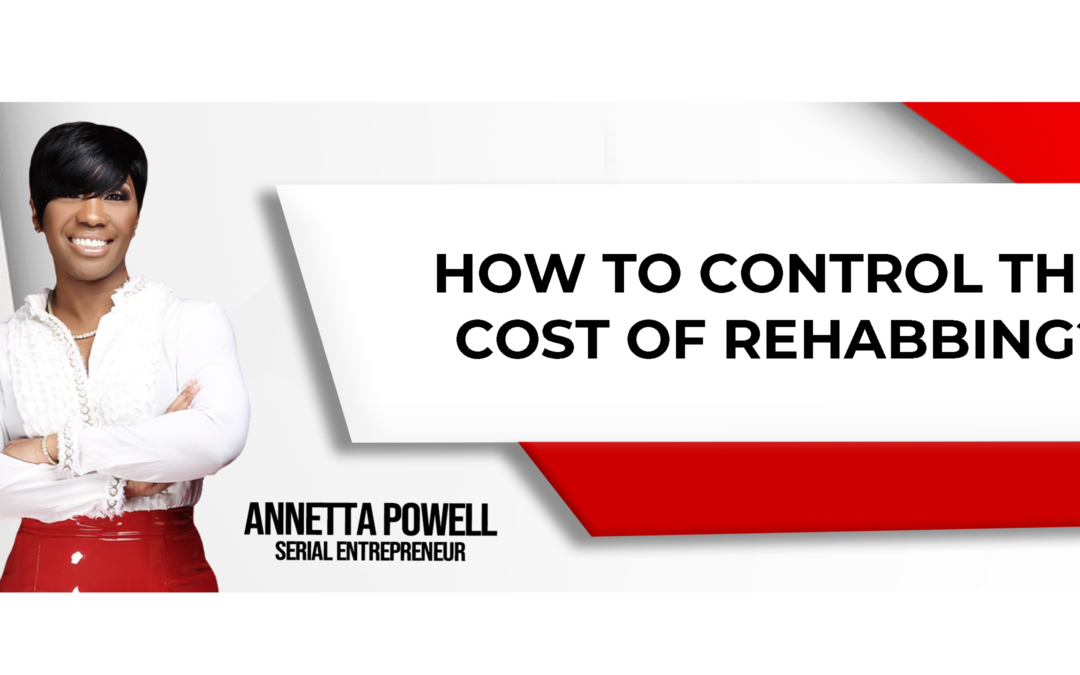Before diving into controlling the cost of rehabbing your investment property or flip, we must understand the term itself. What is rehabbing? Rehabbing refers to an investor purchasing a house at a lower price and then renovating it to sell with a markup. The expenses incurred during the renovation and improvements that the investor undertakes are known as rehabbing costs.
Before beginning to restore any property, investors should first conduct market research, evaluate their financing alternatives, and put together a team to work with. Many budding investors also find it beneficial to locate an industry mentor who can advise them.
As fruitful as the real estate market is, it can be intimidating at times. If you are wondering how to control cost for rehabbing, we have a few pointers for you:
Evaluate the property
One of the most crucial tasks in a real estate restoration is the primary examination of the property. Buyers should hire a competent assessor to do their property inspections. These people will not only assist you in identifying objects that have to be fixed, but they will also notice things that you might typically overlook.
Make accurate estimations
During the initial screening, remember to take photographs and note everything. Your evaluation needs to be thorough to make precise estimations for projected expenses – only then can you control the cost.
Put together a rehab budget once you’ve determined the extent of work that needs to be done. Although each investor’s financial strategy will be different, you must have a summary of all the jobs that need to be done – including complex repairs, additional construction, as well as a fixed monetary amount.
This will ensure that investors have a list of things that need to be added, repaired, or modified. With the help of expenditure estimations, they can also easily prioritize the tasks ensuring that they remain within budget.
Hire a suitable contractor
These professionals will be critical in turning your home into a productive venture. Investors will need to devote a significant effort to vetting general contractors.
Make sure you:
- Get at least 3-4 references from their previous employers
- Get their certifications and qualifications
- Chalk out details of the project to see if they can devote sufficient time to your work
- Ensure that the goals and responsibilities are clear from the get-go
- Check if your work ethic aligns with the contractor’s
- Discuss payment details at the start
This may seem unnecessary work at the time, but avoiding poor contractors will save time, patience, and money in the long run. Discussing everything from plans to budgets with the contractor will help them strategize with controlled finances.
If you do not have everything planned and make last-minute changes, it can result in the cost going haywire.
Closely monitor interior expenses.
While all rehabbing costs need to be monitored, the exterior part of the house is comparatively less expensive. Interior design covers the most significant proportion.
There are virtually unlimited options for investors to upgrade the interior aesthetic of their properties through modifications. But because they have endless ‘options,’ you can always choose to control your costs by making the right choices.
This might entail fixing rather than replacing existing house components. Investors may also look to save money should look for existing house features that may be utilized throughout the repair.
Understand your buyer
Monitoring interior expenses are easier said than done. To control your costs, you need to know precisely what kind of output are you hoping for? Do you need a terrace for each bedroom, or does the existing layout work? Understand the potential buyer and the location your property is in.
If any neighboring buildings are for sale, go to open houses and find out the industry standard. If all the houses have a standard kitchen, there is no point spending extra on a high-end stove no one will be willing to pay extra for!
Ready to learn how to find fix and flip properties?
I’ll show you everything!

Recent Comments